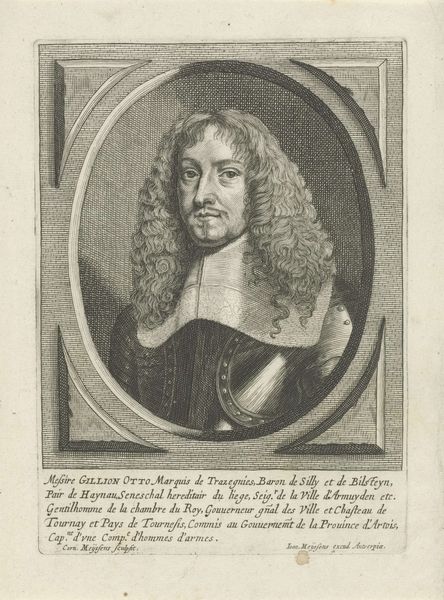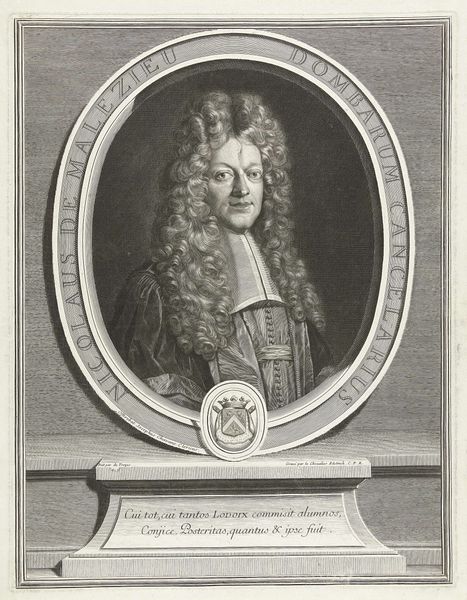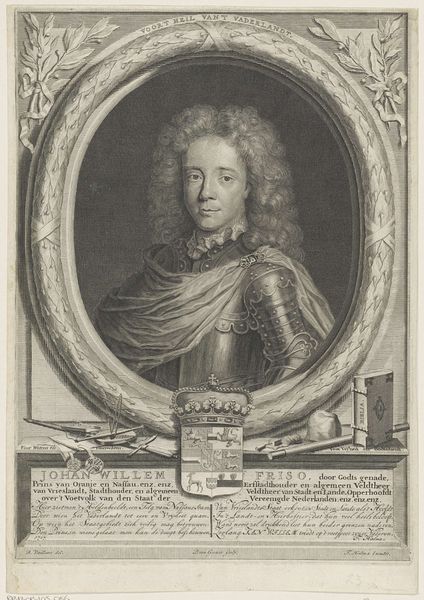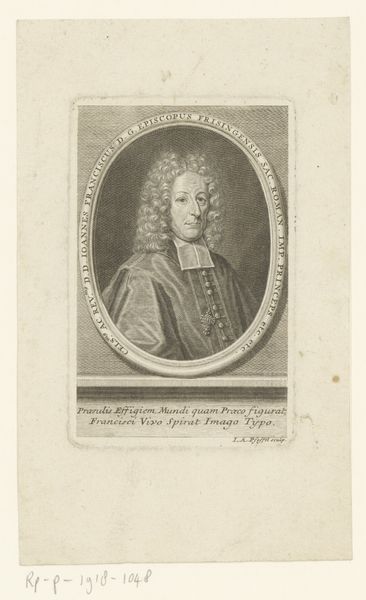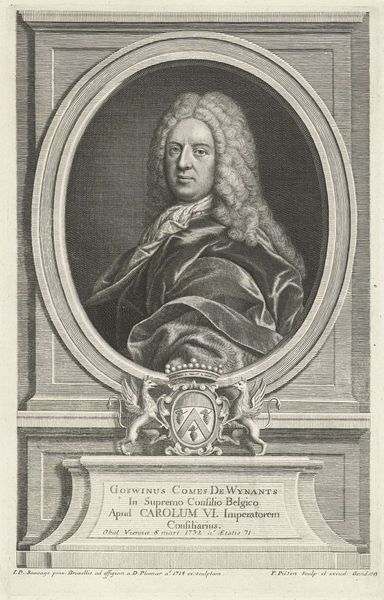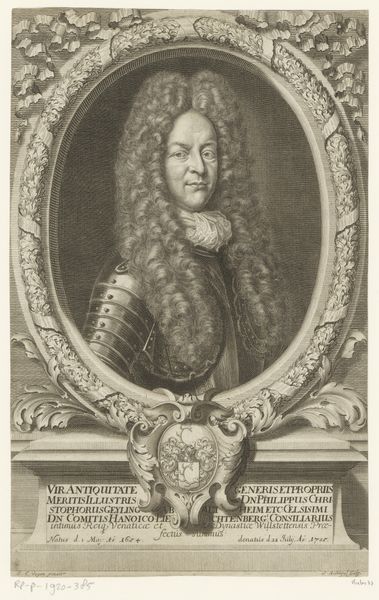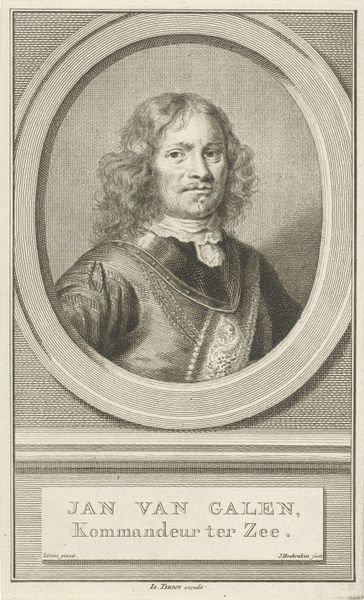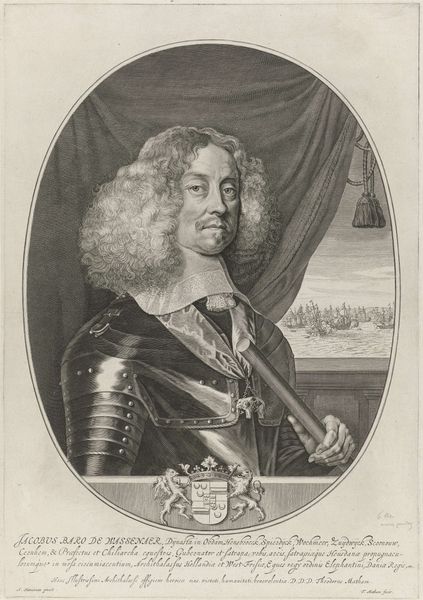
print, engraving
#
portrait
#
baroque
#
dutch-golden-age
# print
#
old engraving style
#
portrait reference
#
engraving
Dimensions: height 179 mm, width 118 mm
Copyright: Rijks Museum: Open Domain
Curator: Oh, what a striking face! There's a real... theatrical quality to the fellow in the frame. He looks like he's stepped straight out of a play. Editor: Indeed! What captures my eye about this work is the institutional framework surrounding portraiture in the 18th century. This engraving, "Portret van Jacob baron van Wassenaer," was created sometime between 1749 and 1759, crafted by Jacob Houbraken, and it now resides within the Rijksmuseum’s collection, showcasing how elite status and artistic representation converged within a museum setting. Curator: An engraving, you say? Fascinating! All those tiny, meticulous lines to conjure up such volume... And, oh, look at the armor. So ornate! There’s such weight, both literal and metaphorical, to the imagery of power here. He’s quite the figurehead. Does anyone know who he *really* was? I find it terribly boring to assume the obvious. Editor: Well, his titles are rather plainly emblazoned below his portrait: “Jacob, Baander-Heer Van En Tot Wassenaer, Luitenant-Admiraal-Generaal der Vereenigde Nederlanden,” and, quite literally, position him within the politico-military hierarchy of the Dutch Republic, symbolizing their legacy through representation, but, the staging, framing him in an oval that hints at Roman precedents, served a very public and powerful symbolic function. Curator: The power dynamics seem almost like a set of smoke and mirrors to me. Maybe the man himself was lovely, warm and fuzzy - he doesn’t come off that way through the print, though, right? Maybe he used his military position as a shield? And perhaps he commissioned this engraving to present that illusion... Editor: Whether he commissioned it, or it was a commemoration after death, engravings like these were mass produced and circulated amongst networks; images and political memory intersect at moments like these in compelling ways! This image doesn’t just show an individual but illustrates how power is presented, interpreted, and then spread to broader audiences. Curator: Well said, truly. I think I could gaze at this dandy forever and find a new facet, a new narrative each time. It's funny how sometimes art reflects us more than them, innit? Editor: Yes, and precisely in those reflections, it challenges us to see what systems endure through the centuries.
Comments
No comments
Be the first to comment and join the conversation on the ultimate creative platform.
